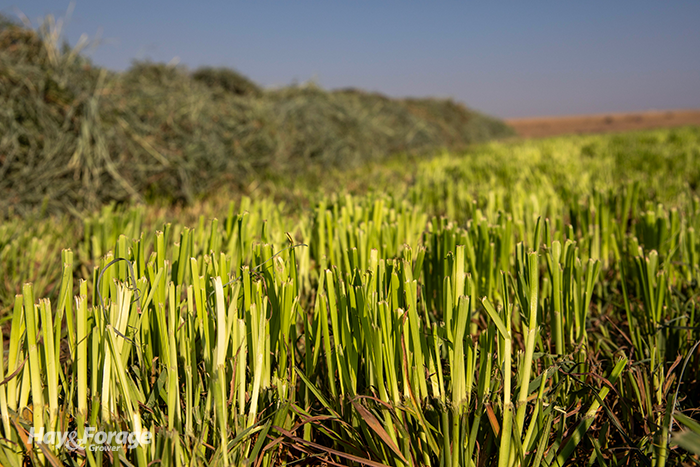
Pure stands of cool-season grasses offer unique challenges and rewards. Assuming stands have already been cut once, most grasses close the book on heading for the season and focus on providing leaf-rich forage; however, their growth is often challenged by drier and hotter growing conditions that summer offers.
When all goes well from a haymaking standpoint, second and third cuttings of grass hay are in demand and bring a premium price. Such hay lots are highly digestible and palatable.
Summer grass cuttings are generally challenged from a yield perspective, at least compared to first cutting. Even with this reduced yield potential, Penn State Extension educators Andrew Frankenfield and Justin Brackenrich think it’s still worth the effort and money to get them harvested. “As grass matures, it is subject to more leaf diseases, such as a brown strip or leaf blotch. We recommend to harvest what is there, add needed fertility for the next cutting, and hope you get some rain to get it growing again,” they write in a recent Field Crop News article.
The extension educators note that cutting schedules for grass fields can range from 30 to 60 days. “In most cases, delaying cutting more than 60 days will not increase tonnage as much as it will decrease quality and affect third cutting,” they explain. “For example, delaying second cutting beyond 60 days into mid-August would likely prevent a third cutting of dry hay since it would be pushed back into late September or early October. At that point, the days are shorter, and hay is more difficult to dry.”
Don’t cut too short
Given the lower yields of summer grass harvests, there might be a tendency to keep cutting heights low. This may seem like a good way to boost yields, but it can severely damage or kill grass stands. Most experts agree to that grass stands should be cut no lower than 4 inches to stimulate regrowth and maintain future productivity.
“During the hottest time of the year, July to August, adequate stubble will provide more solar receptors for the plant, keep the ground cooler, and help conserve soil moisture,” Frankenfield and Brackenrich assert.
With the widespread use of disc-type mowers, there have been many instances where grass or mixed forage stands have been cut out of existence because harvest heights were set too low.
Although there is variability between grass species, regrowth is generated from carbohydrates stored in the lower 2 inches of stem. If routinely removed, this will impede both stand regrowth and longevity.
There are really few downsides to a higher grass cutting height. More low-quality stem is left in the field, regrowth is hastened, stand health and long-term productivity are preserved, and the risk for forage soil contamination is reduced.
Finally, if adequate soil moisture is available, nitrogen fertilizer can be applied after cutting to help promote regrowth for a third cutting. Penn State Extension recommends a rate of 35 to 50 units of nitrogen per acre. Depending on soil test levels, fields may also benefit from the addition of potassium and sulfur.
Keeping grass stands productive requires a different approach than what we see for alfalfa. If adjustments are made, the rewards can be more than worth the extra effort.

